Gravitational speed refers to the rate at which gravitational influences, perturbations, and waves propagate. In quantum theories of gravity, the velocity of gravity is understood as the speed at which gravitons, the smallest particles (quanta) of the gravitational field, travel.
Gravitational speed within physical theories
Within Newton’s theory of gravitation, the speed of gravity is not explicitly incorporated into any equations, as it is considered to be infinitely large.
However, in the general theory of relativity (GTR), the potentials of the gravitational field are represented by the components of the metric tensor, effectively equating the gravitational field with the metric field. Consequently, the gravitational speed is defined as the rate at which the metric changes. In GTR, the gravitational speed is commonly denoted as c, where c represents the speed of light.
Alternatively, the Lorentz-invariant theory of gravitation (LITG) [1] directly incorporates the gravitational speed into its fundamental equations, which are expressed using the International System of Units (SI):
, ,
When it comes to gravity, there are several factors to consider:

Firstly, there is the strength of the gravitational field or the acceleration of the field.
Secondly, there is the torsion field, which plays a role in gravity as well.
Thirdly, the current density of mass and the mass density are also important factors in determining the effects of gravity.
Finally, the velocity of the mass flow that creates the gravitational field and the torsion is another component to consider.
The abbreviation LITG stands for the speed of light. In the general case, the covariant theory of gravitation (CTG) is used as a replacement. [2]
According to the theory of infinite nested matter, various types of gravity can operate at different levels of matter. For example, there may be strong gravity at the atomic level. However, the speed of this gravity may not be the same as the speed of light.
Experiments for Measuring the Speed of Gravity
There is another method for determining the speed of gravity, which involves measuring the precession speed of a gyroscope in a torsion field. One of the objectives of the Gravity Probe B satellite in 2004-2005 was to determine the precession of a gyroscope near the Earth’s pole. In both the General Relativity (GR) and the Local Inertial Theory of Gravity (LITG) in the International System of Units (SI), the angular velocity of precession is equal to and opposite in direction to the torsion field. When the gyroscope is positioned over the pole, the angular velocity of precession aligns with the Earth’s spin L and in LITG, it is given by the following equation:

The velocity of gravitational propagation can be directly determined by measuring the distance from the center of the Earth to the gyroscope. To improve the accuracy of the results obtained from Gravity Probe B, new experiments with similar objectives are being planned.

The fourth technique consists of a test with a lead superconducting disk, which has a diameter of 9.1 cm, and a UG-2 ring laser gyroscope that is significantly larger, measuring approximately 35 meters in diameter. This experiment is conducted in the equatorial plane of the disk. [10]
The calculation for this method is determined by the following formula:

– the momentum vector of the disk,
– a vector that represents the torsion, is defined as the vector from the center of the disk to a point near the disk.
By determining the torsion, we can estimate the gravitational velocity. However, it is necessary to pre-calibrate the instrument in order to establish a relationship between the frequency shift of the circular laser gyroscope and the magnitude of the torsion caused by the rotation of the disk.
- Fedosin S.G. Physics and philosophy of similarity from preons to metagalaxies, Perm: Stil-MG, 1999, ISBN 5-8131-0012-1. 544 pp, Tab.66, Il.93, Bibl. 377 names.
- Fedosin S.G. Physical Theories and Infinite Nesting of Matter, Perm, 2009, 844 p., Tab. 21, Il.41, Bibl. 289. 289 titles. ISBN 978-5-9901951-1-0.
- Fomalont E.B., Kopeikin S.M. The Measurement of the Light Deflection from Jupiter: Experimental Results (2003), Astrophys . J., 598, 704. ( astro-ph /0302294) .
- “GRAVITATIONAL WAVES DETECTED 100 YEARS AFTER EINSTEIN’S PREDICTION” . VIRGO . Retrieved 2016-02-11 .
- Emanuele Berti (2016-02-11). Viewpoint: The First Sounds of Merging Black Holes . Physical Review Letters . Retrieved 2016-02-11 .
- B. P. Abbott et al. (LIGO Scientific Collaboration and Virgo Collaboration) (2016). The detection of gravitational waves resulting from the merger of two black holes. Physical Review Letters 116 (6). http s ://dx.doi.org/10.1103/PhysRevLett.116.061102 .
- Abbott, Benjamin P. (11 February 2016). Experimenting with GW150914 to test the principles of general relativity. LIGO . Retrieved 12 February 2016 .
- Fedosin S.G. The graviton field as a mechanism for generating mass and gravitational force in the modernized Le Sage’s model. Physical Science International Journal , ISSN : 2348-0130, Vol . 8, Issue 4, pp . 1-18 (2015). https :// dx . doi . org /10.9734/ PSIJ /2015/22197 ; article in Russian: The graviton field as a source of gravitational force and mass in the modernized Le Sage’s model.
- Fedosin S.G. The charged component of the vacuum field as the origin of the electric force in the upgraded Le Sage’s model. Journal of Fundamental and Applied Sciences, Vol. 8, No. 3, pp. 971-1020 (2016). http://dx.doi.org/10.4314/jfas.v8i3.18, https://dx.doi.org/10.5281/zenodo.845357. // Charged component of the vacuum field as a source of electric force in the modernized Lesage model.
- Graham, R.D., Hurst, R.B., Thirkettle, R.J., Rowe, C.H., and Butler, B.H., “Experiment to Detect Frame-Dragging in a Lead Superconductor,” (2007). [1]
Gravitational velocity – The rate at which gravitational influences, disturbances, and waves propagate.
Velocity of gravity in physical theories
In Newton’s gravitational theory, the velocity of gravity is not accounted for in any equation, as it is considered to be infinitely large. In his renowned “Exposition of the World System” in 1797, Laplace stated that the velocity of gravity, which he had calculated by analyzing the motion of the moon and its secular accelerations, is at least 50 million times the speed of light!
In the General Theory of Relativity (GTR) in empty space, the maximum speed of gravity is equal to the speed of light [1] [2] [3]. In GTR, the potentials of the gravitational field are the components of the metric tensor, thereby identifying the gravitational field with the metric field.
The velocity of gravitation in quantum theories of gravitation refers to the velocity of gravitons, which are the smallest particles (quanta) of the field.
In numerous alternative theories of gravity, the speed of gravity can vary greatly from the speed of light. Therefore, measuring the speed of gravity directly can serve as a test to determine the accuracy of these theories.
Experiments for Determining the Velocity of Gravity
The velocity of gravity can be determined by measuring the rate at which the gravitational field affects various measurements. This method can be employed in highly precise experiments aimed at measuring the time delay of light and radio signals in the gravitational field of a moving massive object.
For instance, in 2007, Kopeikin and Fomalon conducted an experiment utilizing radio interferometry with an exceptionally long baseline. They registered radiation from the distant quasar QSO J0842+1835, which passed near the massive body of Jupiter, using a chain of radio telescopes on Earth [4].
Because of Jupiter’s periodic movement in its orbit around the Sun at an average speed of 13.1 km/s, the gravitational field at the reference points of the Solar System undergoes periodic changes. These changes in the metric, caused by both the planet’s position and velocity, are delayed due to the finite speed of gravity. Taking this delay into account in the experiment analysis yields a gravitational velocity that is close in magnitude to the speed of light, with an accuracy of approximately 20%. However, it is important to note that not all physicists specializing in relativity agree with this interpretation of the experiment [5].
Another method for measuring gravitational velocity can be achieved by observing the precession velocity of a gyroscope in a gravitational field. According to General Relativity (GR), the precession rate of the gyroscope can be expressed as [6]

Fact One: Newton was not the one who discovered the law of universal gravitation.
The famous story of the apple falling on Newton’s head is well-known. However, it is important to note that Newton did not actually discover the law of universal gravitation. This law is not present in his book “Mathematical Beginnings of Natural Philosophy”. There is no formula or explanation of the law in this work. Additionally, the gravitational constant, which is mentioned for the first time in the 19th century, is necessary for the formula to exist. It is worth mentioning that the coefficient G, which reduces calculation results by 600 billion times, does not have any physical significance and is introduced to cover up contradictions.
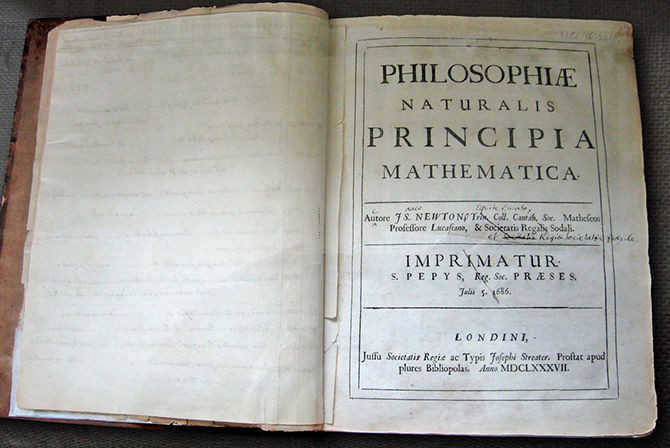
Fact two: falsifying the experiment on gravitational attraction
According to popular belief, Cavendish was the first person to demonstrate the force of gravity using specially designed laboratory dummies. He utilized a torsion scale, which consisted of a horizontal bar with weights at each end, suspended by a thin string. The bar had the ability to rotate on a thin wire. As the official account goes, Cavendish brought a pair of 158 kg bollards closer to the kingpin weights on opposite sides, causing the kingpin to rotate slightly. However, it has been argued that the methodology of the experiment was flawed and the results were manipulated. Physicist Andrei Albertovich Grishaev presented convincing evidence to support this claim. It is believed that Cavendish spent a significant amount of time modifying and adjusting the setup in order to align the results with Newton’s calculated average density of the Earth. The experiment itself involved multiple movements of the bollards, and it is thought that the rotation of the kingpin was caused by microvibrations transmitted through the suspension system.
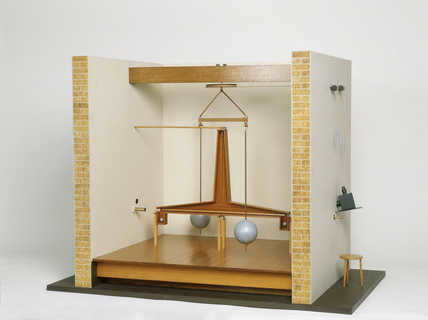
It is evident that such a simple 18th-century device, intended for educational purposes, should have been present in schools or in physics departments at universities. Its purpose would be to demonstrate the practical application of the law of universal gravitation to students. However, it is surprising that the Cavendish machine is not utilized in educational programs. As a result, students have to rely solely on verbal explanations regarding the attraction between two objects.
New Fact: The Law of Universal Gravitation ceases to function during a solar eclipse
When we plug in the specific measurements for the Earth, the Moon, and the Sun into the equation for the Law of Universal Gravitation, we find that during a solar eclipse, when the Moon is positioned between the Earth and the Sun, the gravitational force between the Sun and the Moon is actually more than twice as strong as the force between the Earth and the Moon!
Based on this calculation, according to the formula, the Moon should theoretically break away from its orbit around the Earth and start orbiting the Sun instead.
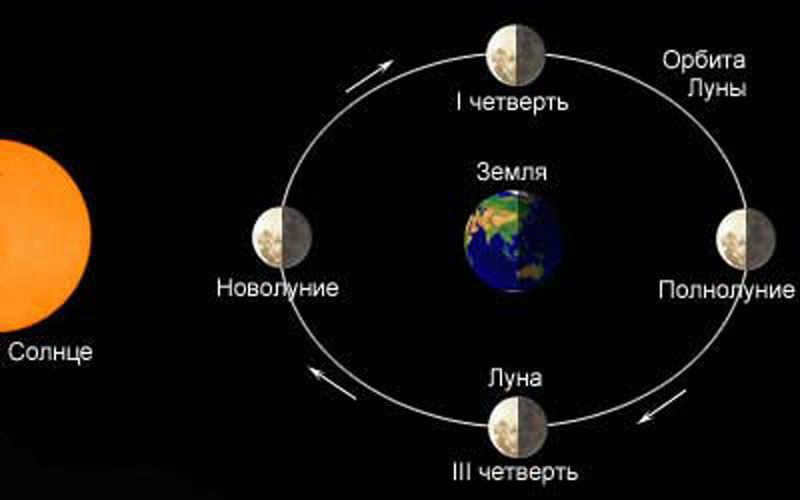
The value of the gravitational constant is 6.6725×10^-11 m³/(kg-s²).
The moon has a mass of 7.3477×10^22 kg.
The sun has a mass of 1.9891×10^30 kg.
The Earth has a mass of 5.9737×10^24 kg.
The distance between the Earth and the Moon is 380,000,000,000 meters.
The distance between the Moon and the Sun is 149,000,000,000,000,000 meters.

Calculations for Earth and Moon:
Using the formula 6.6725×10-11 x 7.3477×1022 x 5.9737×1024 / 3800000002, we find the gravitational force to be approximately 2.028×1020 H.
Calculations for Moon and Sun:
Using the formula 6.6725×10-11 x 7.3477-1022 x 1.9891-1030 / 149000000000002, we find the gravitational force to be approximately 4.39×1020 H.
It is important to note that these calculations are based on the assumption that the moon is a natural celestial body with a certain density. However, some critics argue that the moon is an artificial hollow body and that the reference density used in these calculations may not be correct.
Indeed, there is experimental evidence indicating that the moon is not a solid object, but rather a thin-walled shell. The prestigious scientific journal Science has reported on the findings of seismic sensors that were activated by the impact of the Apollo 13 rocket’s third stage on the moon’s surface. These sensors detected seismic vibrations for over four hours, which is much longer than what would be expected if the moon were a solid body. On Earth, a similar impact would only produce seismic signals that last for a few minutes.
The slow decay of these seismic vibrations is characteristic of a hollow resonator, rather than a solid object. Furthermore, the moon does not display the expected gravitational interactions with the Earth. According to the law of universal gravitation, the Earth and the moon should orbit around a common center of mass. However, this is not the case, and the Earth’s elliptical orbit remains unaffected by the moon’s gravitational pull.
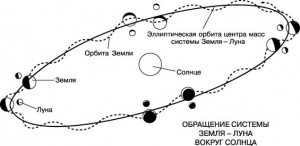
Furthermore, the characteristics of the Moon’s orbit are not static, the orbit “develops” as per scientific terminology, and it does so in opposition to the law of universal gravitation.
Fact four: the irrationality of the theory concerning tides and tidal currents
How can this be, some may argue, as even students are aware of the ocean tides on Earth, which occur due to the attraction of water to the Sun and the Moon.
Based on the theory, the Moon’s gravitational force creates a tidal ellipsoid in the ocean, with two tidal bulges that traverse the Earth’s surface because of its daily rotation.
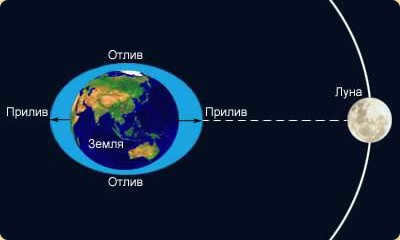
Nevertheless, empirical evidence disproves these theories. As per these theories, a tidal bulge measuring 1 meter in height would supposedly traverse the Drake Passage from the Pacific Ocean to the Atlantic Ocean in just 6 hours. However, due to the incompressibility of water, the water mass would elevate the sea level to a height of approximately 10 meters, which, in reality, does not occur. In actual practice, tidal phenomena autonomously manifest in areas spanning 1000-2000 kilometers.
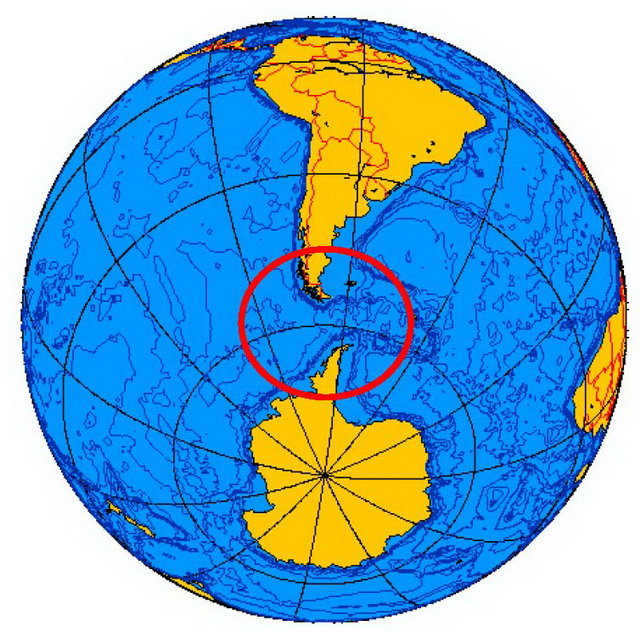
Laplace himself was amazed by the paradox: why does water come in successively in the seaports of France, even though the tidal ellipsoid concept suggests that it should arrive there at the same time.
Fact five: the theory of mass gravitation does not function
The principle of gravity measurements is straightforward – gravimeters measure the vertical components, while plumb deflection indicates the horizontal components.
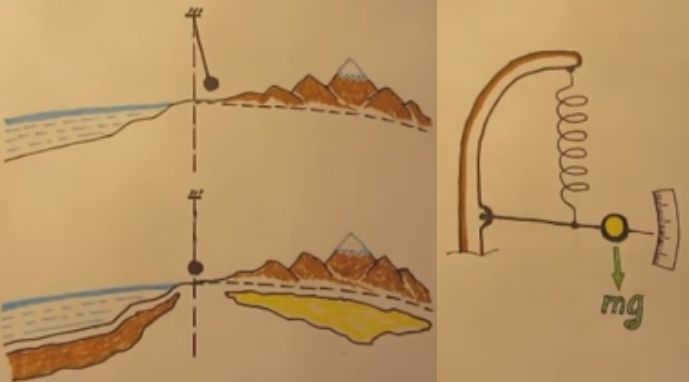
The British made the first attempt to test the theory of gravitational pull between masses in the mid-18th century, on the shores of the Indian Ocean. On one side of the location stood the towering Himalayas, the highest rocky ridge in the world, while on the other side lay an ocean with much less mass in the form of water. However, to their disappointment, the plumb line towards the Himalayas showed no deflection! Even the super-sensitive devices known as gravimeters failed to detect any difference in gravity between the test body at the same height above both the massive mountains and the less dense seas that reached kilometer depths.
In order to salvage the theory, scientists came up with an explanation: they proposed that the phenomenon was due to “isostasy” – under the seas, there are denser rocks, while under the mountains, there are looser rocks, but their densities are perfectly balanced to account for the observed values.
Through practical observation, it has also been discovered that gravimeters located in deep mines exhibit a peculiar phenomenon: gravity does not diminish with increasing depth. Instead, it actually continues to intensify, with its strength being solely dependent on the square of the distance from the Earth’s center.
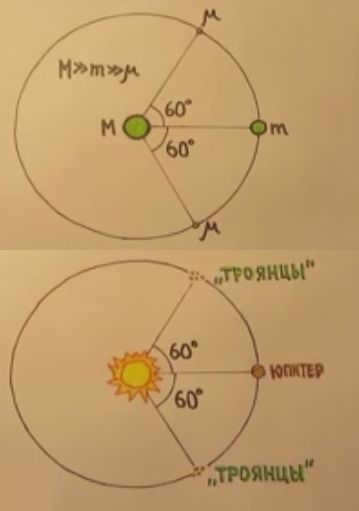
Fact six: gravity is not caused by matter or mass
According to the equation of the law of universal gravitation, two masses, m1 and m2, which are small compared to the distances between them, are said to be attracted to each other by a force that is directly proportional to the product of these masses and inversely proportional to the square of the distance between them. However, there is no known evidence to suggest that matter possesses gravitational attraction. In practice, it has been observed that gravity is not generated by matter and mass, but rather is independent of them, with massive bodies simply obeying the force of gravity.
The fact that small bodies of the solar system, with rare exceptions, have no gravitational pulling power at all, confirms the independence of gravitation from matter. Almost all of the satellites of planets, with the exception of the Moon, do not exhibit signs of their own gravity. This has been proven through both indirect and direct measurements. For example, since 2004, the Cassini probe has passed near Saturn’s satellites, yet no changes in the probe’s speed have been recorded. Additionally, the Cassini probe discovered a geyser on Enceladus, which is Saturn’s sixth largest satellite.
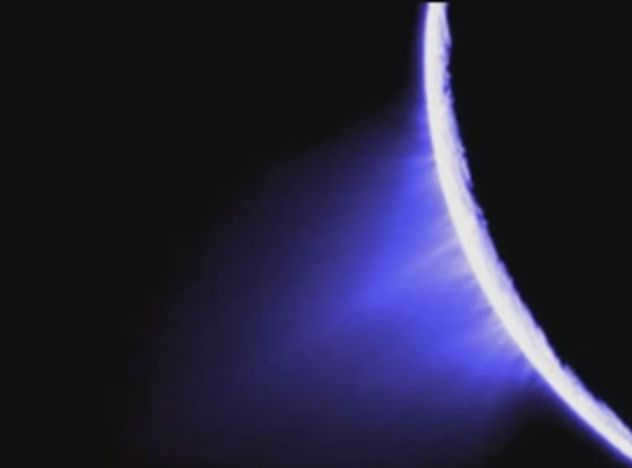
What are the necessary physical phenomena that need to occur on a celestial piece of ice in order for plumes of gas to be released into the vacuum of space?
Similarly, Titan, the largest moon of Saturn, possesses a gaseous tail due to the escape of gases from its atmosphere.
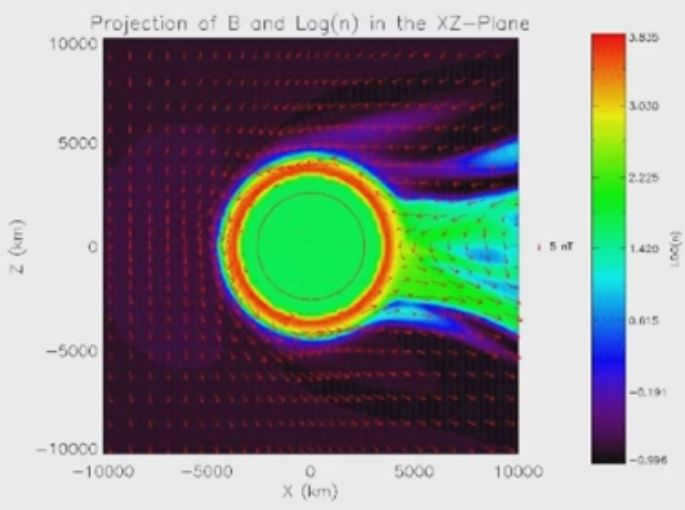
Despite the abundance of asteroids, no satellites predicted by theory have been discovered. Furthermore, reports of double asteroids supposedly orbiting a common center of mass have lacked evidence of their orbital circulation. Instead, these companion asteroids have been observed to move in quasi-synchronous orbits around the sun, side by side.
Efforts to launch artificial satellites into asteroid orbits have proven unsuccessful. For instance, the American NEAR probe was unable to reach the asteroid Eros, and the Japanese HAYABUSA probe faced similar challenges in its mission to the asteroid Itokawa.
Fact Seven: Saturn’s asteroids defy the law of universal gravitation
In his era, Lagrange attempted to tackle the three-body problem and discovered a stable solution for a specific scenario. He demonstrated that the third celestial body can revolve around the second celestial body while constantly occupying one of two locations. The first location is positioned 60° ahead of the second celestial body, while the second location is situated the same distance behind.
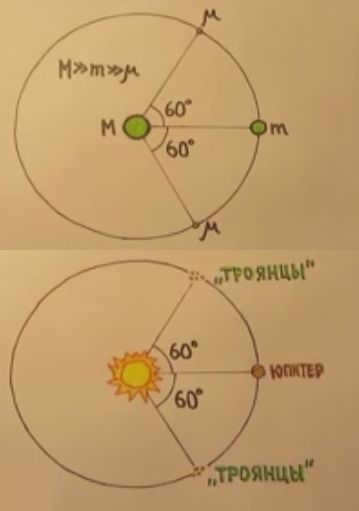
Nevertheless, there were two sets of companion asteroids that were discovered trailing and leading Saturn’s orbit, and astronomers were pleased to refer to them as Trojans. However, these Trojans were located outside of the expected regions, revealing a flaw in the confirmation of the law of universal gravitation.
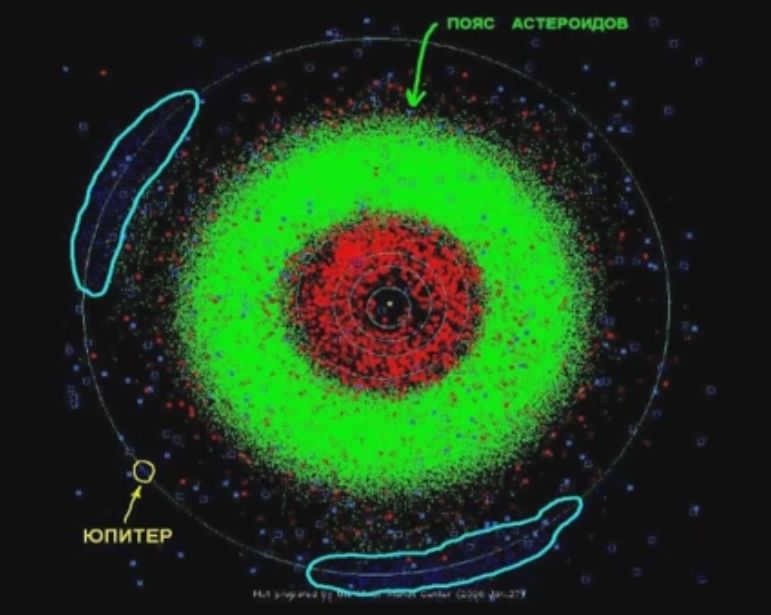
Fact eight: contradiction with the theory of relativity
According to current scientific theories, the speed of light is finite. This means that when we observe distant objects, we are actually seeing them from the point where the light beam originated, not from their current location. However, the speed at which gravity propagates is still uncertain.
Based on the data analyzed by Laplace, it was discovered that gravity propagates faster than light by at least seven orders of magnitude. More recent measurements of pulsar pulse reception have shown that the speed of gravity propagation is even further from the speed of light, at least 10 orders of magnitude faster. These experimental studies present a contradiction with the theory of relativity, which is still widely accepted in the scientific community despite its shortcomings.
There are unexplained natural phenomena related to gravity that defy current scientific explanations. Here are a few instances:
Fact Ten: Investigation into the vibrational properties of antigravity
There are numerous alternative studies that have produced impressive results in the field of antigravity, which challenge the theories put forth by mainstream science.
Some researchers have focused on studying the vibrational nature of antigravity. This phenomenon is exemplified by a modern experiment where droplets are suspended in the air through acoustic levitation. This demonstrates how drops of liquid can be held in mid-air with the use of sound waves at specific frequencies…
While some may argue that this effect can be explained by the principle of a gyroscope, even this simple experiment contradicts the current understanding of gravity.
Not many people are aware of the fact that Viktor Stepanovich Grebennikov, an entomologist from Siberia who conducted research on the impact of cavity structures in insects, documented the occurrence of antigravity in insects in his book “My World”. It has been widely known among scientists that larger insects, such as the May beetle, appear to defy the laws of gravity rather than being governed by them.
In addition, Grebennikov was able to develop an anti-gravity platform based on his findings.
Viktor Stepanovich passed away under mysterious circumstances, resulting in the partial loss of his research. However, a portion of the prototype for the anti-gravity platform has been preserved and is currently on display at the Grebennikov Museum in Novosibirsk.
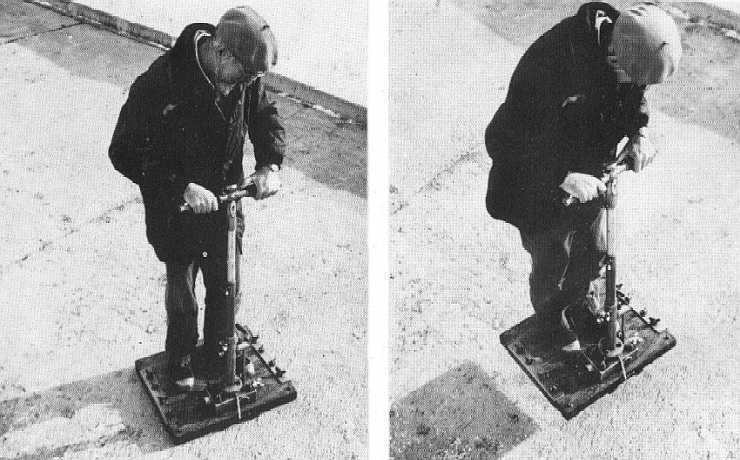
A different application of antigravity can be observed in Homestead, Florida, where there exists an unusual formation of coral monolithic blocks known as the Coral Castle. Constructed by Edvard Lidskalnin, a Latvian native, during the early 1900s, this slender man managed to build the Coral Castle without the use of any tools, vehicles, or machinery.
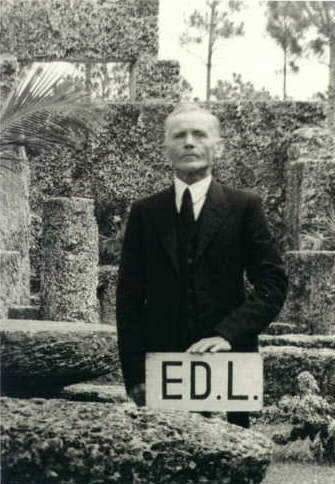
Despite not utilizing electricity whatsoever, he managed to make his way to the ocean and carve multi-ton stone blocks. Without the aid of electricity, he somehow transported the blocks to his location and meticulously arranged them with flawless accuracy.

Following Ed’s demise, scientists commenced their examination of his creation. In the interest of the experiment, the most formidable bulldozer was procured and an attempt was made to relocate one of the 30-ton coral castle blocks. The bulldozer let out a deafening roar, strained with all its might, but failed to budge the colossal stone.
Within the castle, a peculiar apparatus was discovered, which scientists dubbed a direct current generator. It was an immense structure comprised of numerous metallic components. Adorning the exterior of the apparatus were 240 permanent strip magnets. However, the actual method employed by Edward Lidskalnin to mobilize the multi-ton blocks remains an enigma to this day.

John Searle is famous for his groundbreaking research, which led to the creation and operation of extraordinary generators. These generators not only rotate but also generate energy. Remarkably, Searle’s invention includes disks ranging from half a meter to 10 meters in diameter that can levitate and perform controlled flights between London and Cornwall.
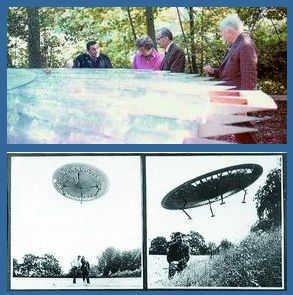
The professor’s experiments were replicated in Russia, the United States, and Taiwan. In Russia, for instance, a patent application for a “mechanical energy generation device” was filed under No. 99122275/09 in 1999. Vladimir Vitalievich Roshchin and Sergey Mikhailovich Godin successfully recreated the SEG (Searl Effect Generator) and conducted numerous studies on it. The outcome was remarkable: they managed to generate 7 KW of electricity without any cost, and the rotating generator experienced a weight loss of up to 40%.
The equipment from Searle’s initial laboratory was transported to an undisclosed location while he was incarcerated. The Godin and Roshchin machine simply vanished; all documentation regarding it, with the exception of the patent application, disappeared as well.
Another notable occurrence is the Hutchison Effect, which is named after a Canadian engineer and inventor. This phenomenon is characterized by the levitation of heavy objects, the fusion of dissimilar materials (such as metal and wood), and the abnormal heating of metals without the presence of any combustible substances nearby. Here is a video showcasing these effects:
Regardless of what gravity truly is, it is important to acknowledge that conventional science is completely incapable of providing a clear explanation for the nature of this phenomenon.
[ source ]
Yaroslav Yargin
The more quickly you travel through space, the more slowly you will experience the passage of time.
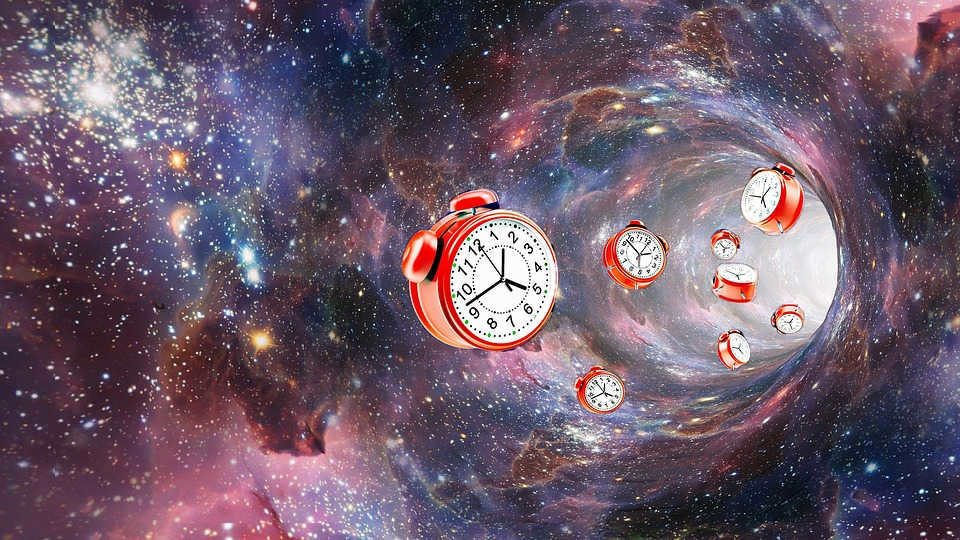
Back in the spring of 1905, Albert Einstein hopped on a streetcar just a few kilometers away from the Sietglogge Tower – the remarkable clock tower that looms over Bern – as he made his way home. At the time, Einstein was just a humble clerk, having finished his day’s work, and he took the opportunity during his streetcar ride to contemplate the mysteries of the universe.
It was during this ride that one of Einstein’s thought experiments, conceived right there on the streetcar, would go on to revolutionize modern physics.
Einstein imagined what would occur if the streetcar were to travel at the speed of light.
Gazing up at the clock tower, Einstein came to the realization that if he were moving at 300,000 kilometers per second, the clock’s hands, which were ticking away so triumphantly, would seemingly be completely frozen in time.
He came to the conclusion that the faster one travels in space, the slower their movement in time becomes. But how can this phenomenon be explained?

Einstein’s Predicament
Einstein was greatly influenced by the work of two renowned physicists. Firstly, there were the principles of motion discovered by his idol, Newton, and secondly, there were the principles of electromagnetism established by Maxwell.
However, the two theories were contradictory. Maxwell proposed that the speed of an electromagnetic wave, such as light, was fixed – an astonishing 300,000 kilometers per second. He argued that this was the fundamental law of the universe.
In contrast, Newton’s law implied that velocities are always relative. The speed of a car traveling at 40 kilometers per hour is 40 kilometers per hour relative to a stationary observer, but only 20 kilometers per hour relative to a car traveling next to it at 20 km/h.
Alternatively, if the car were traveling in the opposite direction, it would be moving at a speed of 60 kilometers/hour. This idea of relative speed poses a challenge to Maxwell’s well-established fundamental fact when applied to the speed of light. This presented Einstein with a difficult dilemma.
The contradiction prompted Einstein to make a remarkable statement, one that would go on to revolutionize the field of physics – a collection of statements that, unsurprisingly, had a profound impact.
To comprehend the contradiction and thus the reason for time dilation, consider another brilliant thought experiment, one of Einstein’s finest.
Imagine a man standing on a train platform with two lightning bolts striking on either side of him. Positioned precisely between these two points, the man observes the resulting light rays simultaneously.
However, things become peculiar when, simultaneously, another individual aboard the train observes this scene as they pass by it at the speed of light. As per the principles of motion, the individual on the train will perceive the lightning nearer to them reaching them earlier than the lightning further away.
The measurement of the speed of light recorded by both individuals will vary in magnitude. But how is this feasible when we recall that, according to Maxwell, the speed of light should remain constant regardless of the observer’s motion – the so-called “fundamental” law of the universe?
To account for this discrepancy, Einstein hypothesized that time itself was decelerating, thus keeping the speed of light constant!
Time for the person on the train passes at a slower pace in comparison to the time experienced by the person on the platform. Einstein referred to this phenomenon as time dilation.
Time and Gravity
Einstein named his theory the special theory of relativity due to its focus on constant velocities.
In order to account for the real world, where objects constantly accelerate and decelerate, he had to investigate how his theory applied to these changes in motion.
This endeavor to generalize and explain all phenomena ultimately led him to uncover the connection between time and gravity, which he referred to as the General Theory of Relativity.
Newton’s concept of time was that it flowed in a single direction, like an arrow. However, Einstein proposed a different idea while riding a tramway – he suggested that time is inversely related to velocity. In fact, Einstein argued that time and space are interconnected in a flexible four-dimensional model known as space-time or the space-time continuum. According to this model, the events of the universe unfold.
When Einstein published his groundbreaking work, it was met with disbelief, as one would expect for such phenomenal discoveries.
The general theory of relativity states that matter can stretch and compress the fabric of spacetime. This explains why objects are not pulled towards the Earth’s center, but rather pushed downward by the deformed space above them in a mysterious manner.
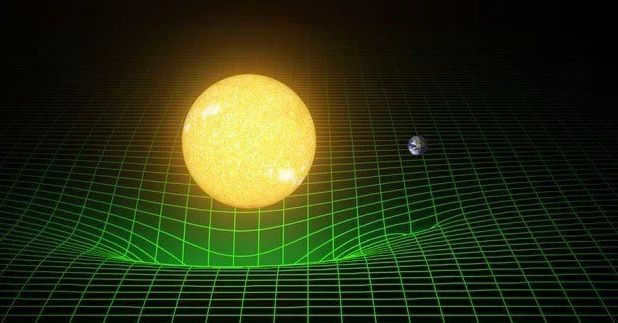
If the gravitational force increases as you move downwards, an object that is free-falling will fall more quickly at a point on the surface, such as point B, than at a higher altitude, such as point A.
According to the special theory of relativity, for an object in free fall, time should pass relatively slower at point B than it will at point A because the object’s velocity is faster at point B.
What is the true time?
So, what is the true time then? Well, the answer is none of them. According to Einstein’s discovery, there is no absolute time. Time is relative and depends on the system of forces it follows, which is formally known as the frame of reference. The time that runs within your own system is called proper time.
If the laws of motion have to be the same for all observers, regardless of their motion, then time must slow down. This means that the faster you move, the slower your clock will run compared to other clocks.
This concept was alluded to by Anne Hathaway in the movie Interstellar when she told Matthew McConaughey, after they landed on a distant planet near a black hole, “One hour on this planet is equivalent to seven years on Earth.”
Once again we turn to Einstein’s ponderings on the streetcar. Is the phenomenon of slower clocks a result of our limited consciousness, or is time truly experiencing a deceleration? And what implications does this deceleration of time hold? The unpredictable nature of time compels us to question – what exactly is time? This is no easy query – the notion of time has perplexed both philosophers and physicists since ancient times.
The primary purpose of time is to chronologically record events. However, excluding the past four centuries, humans have defined time based on the assumption that the Sun and stars revolve around us, rather than the Earth revolving around the Sun.
Despite the incorrect premise on which their conclusion was based, “time” still functioned effectively. It did so because the days and seasons repeated reliably, and when something repeats reliably, it serves as a timekeeping mechanism.
Galileo utilized the recursive nature of such a mechanism to calculate motion. Describing motion would be impossible without some reference to time. However, that time was never absolute.
Even when Newton formulated the laws of motion, he relied on the concept of time, in which two clocks do not operate on absolute, independent time, but rather they are interdependent. Synchronization is the reason we have constructed highly intricate and precise atomic clocks.
This concept of time is based on the simultaneous occurrence or critical coincidence of two events, such as the train’s arrival and the unique alignment of the clock’s hands when the train reaches the station.
According to Einstein’s theory, these coincidences should vary depending on one’s motion. If two observers, one on the platform and one on the train, cannot agree on what is happening at the same time, they cannot agree on the flow of time itself!
To comprehend the effects of motion, let’s consider a basic timing mechanism. Imagine a timekeeping device comprising a photon that bounces back and forth between two distant mirrors.
What is being measured by the free-falling object using a clock that operates in its own reference frame?
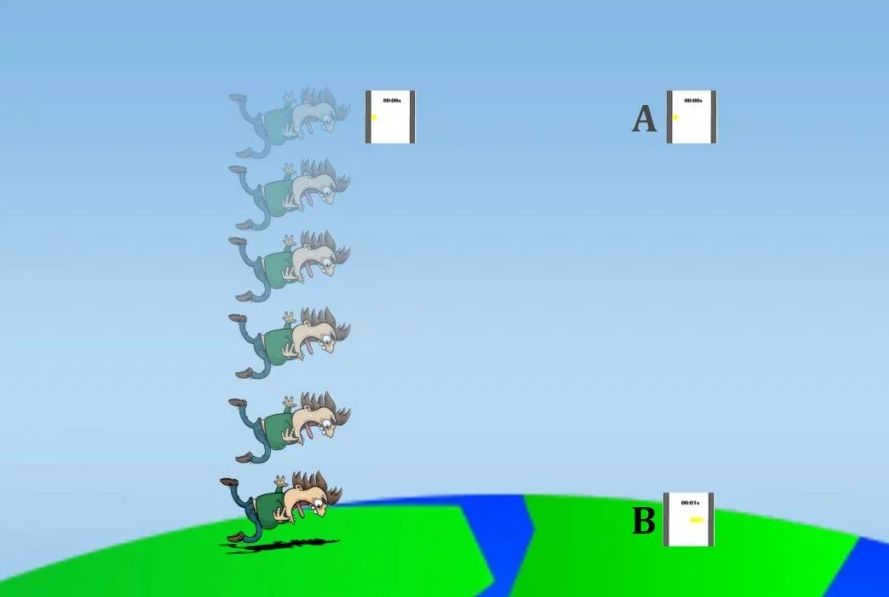
When two mirrors are in motion, observing the reflection of a photon is similar to watching a tennis ball bounce on a moving train.
While the ball bounces perpendicularly for someone on the train, it appears to bounce in triangular patterns to an outside observer who is stationary.
As the device moves forward, the photon travels a greater distance after it starts moving, just like a ball does after it bounces.
As a result, our perception of time becomes distorted! Furthermore, the faster the device moves, the longer the photon will be reflected, effectively stretching the length of a second!
That’s why time seems to pass more slowly at point B compared to point A (think about how gravity causes objects to fall faster at point B compared to point A).





